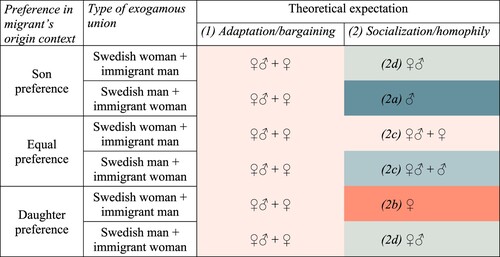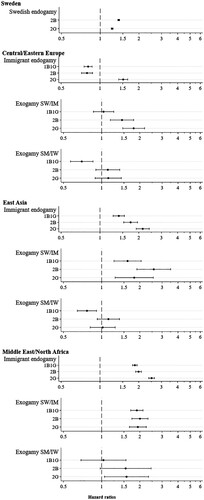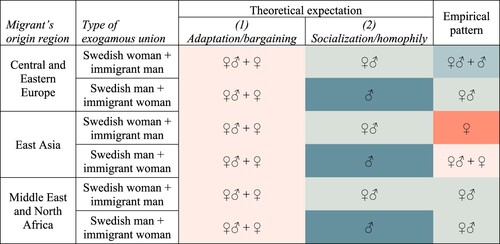Figures & data
Figure 1 Theoretical expectations of sex composition preferences for children in intermarriages
= no preference or one-of-each preference;
Table 1 Relative third-birth risks by union type and sex composition of previous children, estimated from piecewise constant exponential models: Sweden, 1990–2009
Table 2 Relative third-birth risks in exogamous unions between immigrants and Swedish men or women, estimated from Cox proportional hazards models with and without family fixed effects: Sweden 1990–2009
Figure 2 Relative third-birth risks by union type and sex composition of previous children, for three regional immigrant-origin groups, estimated from piecewise constant exponential models: Sweden, 1990–2009
Notes: Models control for mother’s age, mother’s age squared, parental age gap, period, and municipality fixed effects. 1B1G = one boy, one girl; 2B = two boys; 2G = two girls. Exogamy SW/IM = Swedish woman and immigrant man; Exogamy SM/IW = Swedish man and immigrant woman. Dashed vertical lines show the reference category: endogamous Swedish couples with a boy and a girl. Horizontal bars show 95 per cent confidence intervals. The x-axis is on a logarithmic scale.

Figure 3 Theoretical expectations and empirical patterns of sex composition preferences for children in intermarriages, for three regional immigrant-origin groups with son preference
= no preference or one-of-each preference;
